- Learning time
- 30 minutes
- First play time
- 60 minutes
Heir to the Pharaoh
Designed by: Alf Seegert
The dying Pharaoh is displeased with this offspring, and – in an action so ridiculous and spiteful it’d be rejected by the Ridiculously Spiteful Committee – he’s leaving his riches to his pets; or at least the Gods they represent. In Heir to the Pharaoh you represent these pets – a cat and a dog – now engaged in a battle for his affections and bequeathments.
One player is the cat (Bast) and the other the dog (Anubis). Each player starts with a hand of bidding cards, and the nub of the game is bidding for six God cards over each round. Each bid is a one-time deal, with players revealing their bids simultaneously – any number ties are broken with the sun card beating the moon card. Once all the God cards are claimed, they are then activated in number order, and after that the cards you used to bid with go to the other player for the next round.
So let’s look at the God cards and what they do. Each has an effect on the board, and each effect will score points. The board’s centre shows the Valley of the Nile and somewhere – randomly chosen at the start of the game – is the foundations of the great pyramid. If you play Seshat (1) you get to place a monument in the valley. Each monument has a base with arrows pointing in random directions: at the end of the game, it will score points based on the other monuments it points to, plus it will also score itself if one of the arrows points at the pyramid. However, Seshat only allows you to place the monument – to own it, you need to play Geb and Nut (2) instead. Ptah (3) allows you to claim a monument card, and these simply score points based on how many you have of the same type. If you play Ra (4) you get to add a disc to the current round marker, and at the end of the game you’ll get points equal to your longest chain of round markers. Wadjet (5) lets you draw an Animal Magic card into your hand – more on those in a moment – and the Pharaoh himself (6) doesn’t actually get bid for – instead he prompts both players to contribute to the building of the great pyramid: every second round these contributions are revealed and the player who has contributed most will add the next layer of the great pyramid with their dog/cat side facing up: if you’ve contributed the most layers at the end of the game, there’s a not-insubstantial 7 points coming your way.
After these have been played, Thoth (7) goes to the player who has fewest Gods this round. But he’s not very exciting, and just prompts the clearing up and setting up of the next round.
The aforementioned Animal Magic cards are like boosters you can use in the bidding. When playing your bidding card you announce that you’re playing an Animal Magic card, and before bids are revealed your opponent may choose to change their bid. Most of the time these work in your favour: grabbing a bonus bidding card, or allowing you to make an extra contribution to the pyramid, or even upping your bid. But they can occasionally explode in your face too: one Animal Magic card declares that the lowest bid will win, and this can be risky if you play it with a 2 (or even a 1 sun card if your opponent has the 1 moon card!)
Finally, the God cards – Thoth aside – always appear in a random order, but the first revealed card gets the Favour of the Pharaoh. This token sits on the card and reminds the winning bidder that this God is even more powerful than normal this round: the standard action is boosted in some way particular to the God in question; and how is made clear on each card. When all rounds have been played, the Valley of the Nile is scored – more on this in Sam Says, right – and the player with the most points gets all the Pharaoh’s earthly possessions.
The guru's verdict
-
Take That!
Take That!
Plenty, although rather than the Take That of explosive missiles or sliding swords, it's the bidding and political manoeuverings on the board.
-
Fidget Factor!
Fidget Factor!
Low. You'll only ever be waiting for one player to bid (as well as yourself) and the God cards are usually resolved fairly quickly: although GJHGJHGJHG can sometimes involve a bit of thought.
-
Brain Burn!
Brain Burn!
Although it's pretty abstract and more a confection of overlapping ways to score points than a solid theme or story, it isn't actually too demanding on the noggin.
-
Again Again!
Again Again!
The bidding means it's impossible to predict, and so although the puzzle(s) are always the same, how they play out are satisfyingly varied.

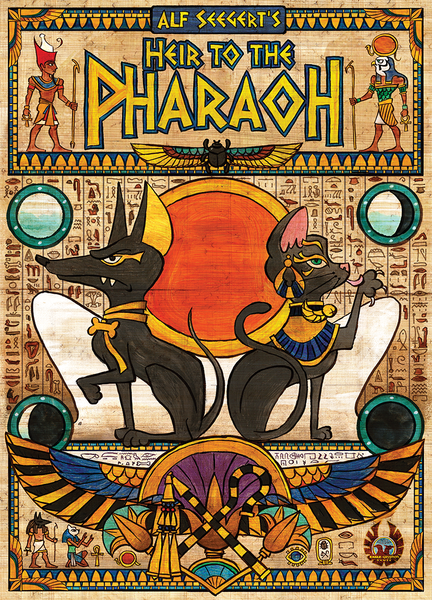

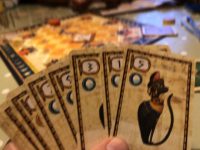
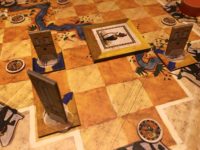
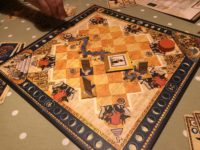
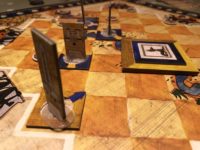
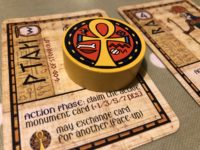



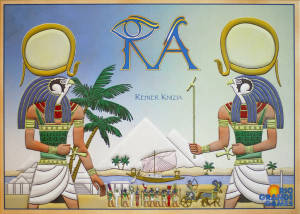

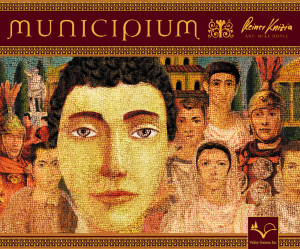
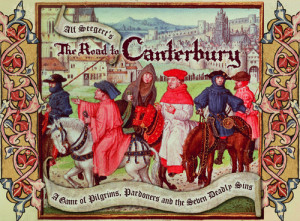
Sam says
A strange game, where the overriding impression is the mechanics of it all rather than the theme. But I think that's what the designer was mostly interested in - the tough choices and second-guessing of the bids, the risk-reward of sacrificing your big bidding cards, and the (actually fairly light) complexity of the puzzles on the board: although they don't initially seem to interlock very much at all, they do connect indirectly, as focusing your energy on one aspect means sacrificing another - and it's probably best-played as a balancing act between them all. Don't neglect Seshat and Geb and Nut though: the monuments in the valley can be a passage to a huge amount of points if you let your opponent have their way!